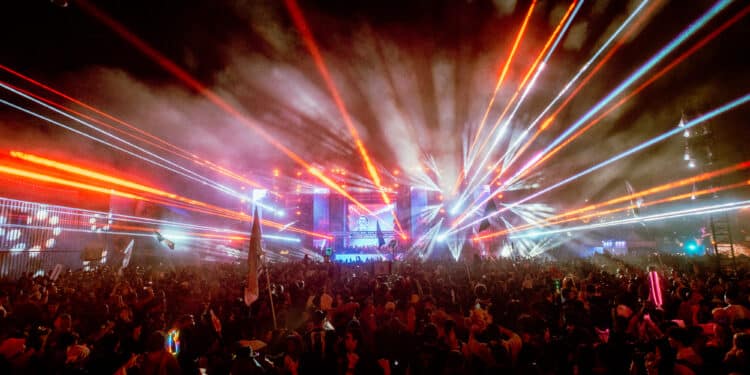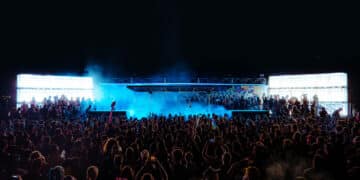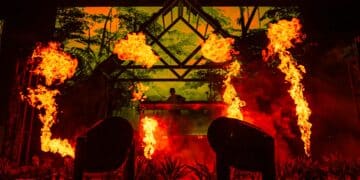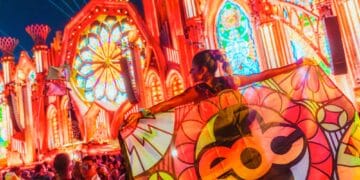Dive into a brief history of synthesizers in horror films with a playlist featuring artists like John Carpenter, Kavinsky, The Dare, and Mareux to match.
Humans have a tendency to fear what they don’t understand, and no one knows this better than the synthesizer.
Since its creation, the instrument has been met with skepticism. Traditional musicians feared it would replace them. They warned it was taking the soul out of sound. It was an undeniable sign that the new world was here: the age of the machine.
The technology of the synthesizer wasn’t the only reason people feared it. The sounds themselves often evoked chilling mental imagery. The machine created frequencies that could only be described as otherworldly or unsettling.
It could stretch, bend, or contort sound in ways the human ear had never been exposed to before. It could create dreamy, ethereal sounds just as well as haunting, devilish ones, capabilities that quickly captivated the horror film industry. But in horror, at least, this was met with open arms.
Synthesizers in Horror Started With Suspiria
In the 1970s, the synthesizer became a weapon for the horror industry. It allowed composers to create soul-quivering scores that amplified onscreen tension. With electronic music, composers could make sounds that mirrored feelings, like stress or a pounding heartbeat, that stretched past the sonic confines of a traditional orchestra. The use of synthesizers in horror films would soon spawn a new genre: horror synth.
Dario Argento’s 1977 film, Suspiria, was one of the first to memorably bring horror synth to the public eye. The score of the cult classic film, composed by Claudio Simonetti of rock band Goblin, relied heavily on synthesizers like the Moog Modular System 55. Horror buffs still consider it one of the greatest film scores of all time. The soundtrack was so groundbreaking that it caught the attention of producer-composer John Carpenter, who was working on his 1978 film, Halloween, at the time.
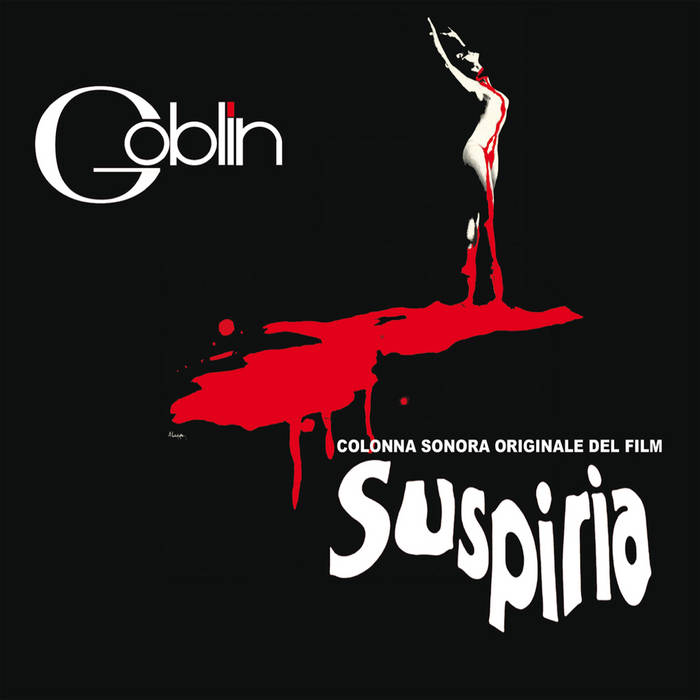
To many, John Carpenter’s Halloween not only raised the standard for creativity in film scoring, but it also completely rewired the industry’s approach to logistics. Carpenter composed the entire synth-driven soundtrack on his own. He showed that an orchestra isn’t necessary in film scoring, validating the fears of analog musicians when synths first hit the market.
John Carpenter used a Moog Modular System III to stylize a simple piano riff into one of the most recognizable tunes of all time. Even if you haven’t seen the film, it’s fair to suspect the theme track’s been stabbing through your head as you’ve read this.
The Halloween theme was also composed in 5/4 time, setting its unfamiliar sound to an equally obscure rhythm. The combination gave life to the emotionless, voiceless Michael Myers, a character who was never intended to have it.
The score of the film is ultimately what makes it a horror classic. Before the soundtrack, it wasn’t even considered scary. In the composer notes of the film, Carpenter recounted, “I screened the final cut minus sound effects and music for a young executive from 20th Century Fox (I was interviewing for another possible directing job). She wasn’t scared at all. I then became determined to ‘save it with the music.’”
John Carpenter’s Halloween almost immediately set the standard for dynamic sonic presence in horror films. It’s still referenced by horror synth composers today, one of whom is Rich Vreeland, aka Disasterpeace.
Similar to Halloween, Vreeland’s score to the 2014 film It Follows is a masterclass in horror synth. Each track mirrors the emotion behind its respective film scene, swinging from delicate, high frequencies to lower, almost jarring levels of electronic noise. If this polarized approach sounds familiar, it should. Vreeland and It Follows director David Robert Mitchell were directly inspired by the horror synth masterpieces of the late 70’s.
In an interview with Fresh Fiction, Rich Vreeland explained, “David used a lot of [Krzysztof] Penderecki, John Cage and John Carpenter in the temp score for It Follows, so I gravitated to those as a source of inspiration. I also channeled Goblin a bit.”
The synthesizer’s ability to twist and manipulate sound into unnatural noise makes it an obvious fit for the horror industry. Despite this, the reason horror synth composers implement similar strategies might extend past artistic intuition.
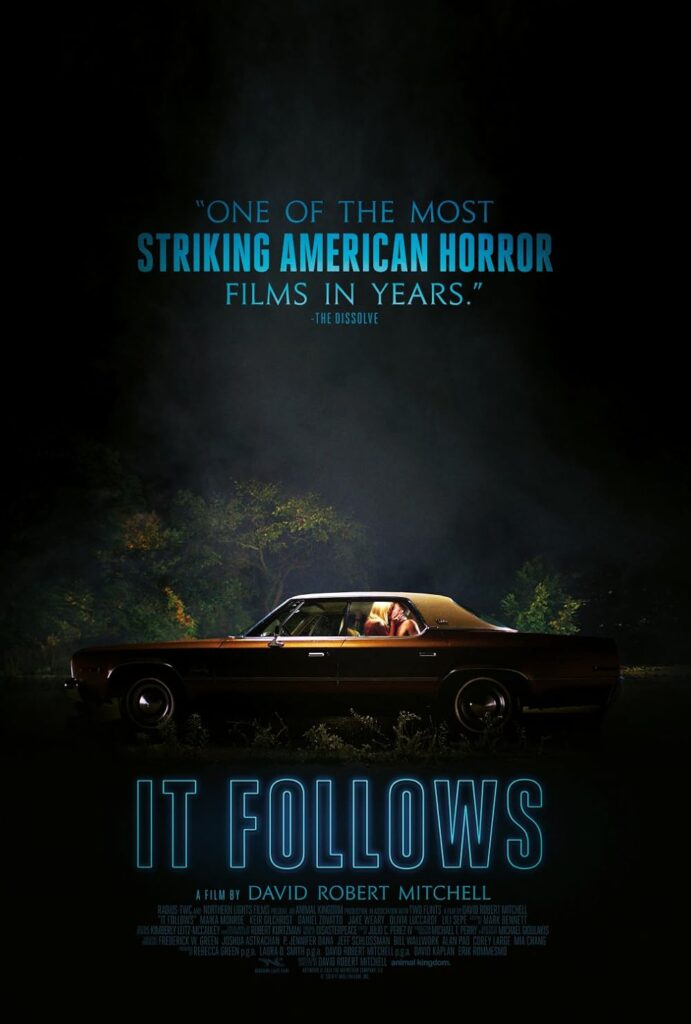
Studying Sonic Influence on Fear
In a 2010 study, three university professors named Daniel Blumstein, Richard Davitian, and Peter Kaye set out to find out if filmmakers use specific sonic strategies to evoke feelings of fear or anxiety.
Nonlinear vocalizations are defined as verbal cues that vertebrate animals (including humans) make when under duress. These sounds, like a scream or growl, are considered “harsh” and tend to cause unpredictable frequency and tone shifts. The sway from vocal predictability lets other vertebrate beings know when one of their own is in danger.
Understanding the physiological response to fear means it can potentially be recreated in a controlled environment. With this in mind, the study aimed to see if horror film scores used nonlinear analogues to influence emotion. The verdict? A resounding “yes.”
According to Blumstein et al., horror film scores rely on the use of noise, distortion, and rough timbre to mimic animalistic distress sounds to trigger a biological fear response in an audience. They also tend to be more static and use less abrupt frequency shifts.
The findings shed light on why the scores of both Halloween and It Follows are so effective. Neither film is gory, demonic, or overtly disturbing in its content. Both were made on a shoestring budget, meaning they lack special effects and expensive editing techniques. Yet, both films are considered to be two of the smartest horror films of all time.
So what makes them scary? Along with their emotionally relatable storylines, both Halloween and It Follows use atmospheric soundscapes and non-musical sounds to manipulate emotion. They use glitches, drone noise, and scream-like frequencies to correspond with whatever the characters are experiencing onscreen.
These techniques align with the findings of the Blumstein study, meaning they naturally create a biological response to fear. Combine this with the innately spooky sound of the synthesizer, and you have the recipe for a horror classic.
The Synthesizer and The Substance
Just as people are wary of misunderstood topics like new technology or the supernatural, the synthesizer faced similar skepticism. As it seems to embody both taboo subjects, it’s not too much of a stretch to understand why the synth was feared.
The initial cycle of putting “fear” into the machine and getting “fear” back, by way of horror synth, created a feedback loop. Because of this, horror film composers like John Carpenter and Claudio Simonetti latched onto the synthesizer because it was an obvious choice: Scary sound plus scary reputation equals unlimited fear potential.
But major cultural shifts usually come at a cost. The synthesizer wasn’t a welcome addition for everyone. It confirmed traditional musicians’ concerns that electronic music was here to stay, leaving them mourning, in their eyes, the eventual loss of opportunities and authenticity. Luckily, their fears would prove to be a bit overblown.
Synthesizers are still regularly used in horror today, with the most recent and notable example being 2024’s boundary-pushing body horror film, The Substance. The title track is a techno masterpiece that’s a blended mix of sexiness and discomfort, perfectly mirroring the film itself.
To celebrate the history of synthesizers in horror films — and spooky season — we created a playlist with horror synth tracks from influential film scores like Halloween, It Follows, Suspiria, Nightmare on Elm Street, The Shining, Videodrome, and The Substance. As a bonus, we added spooky-themed tracks from synth artists like Boy Harsher, Lebanon Hanover, Kavinsky, The Dare, and Mareux — no tricks, just treats!



